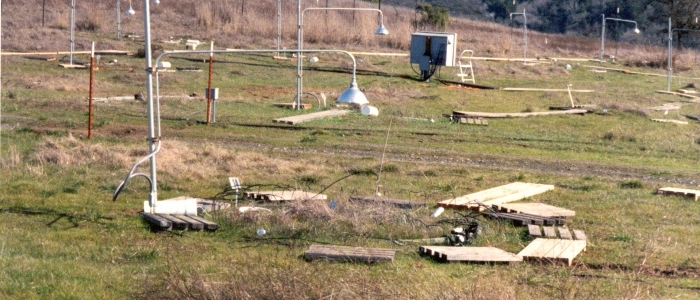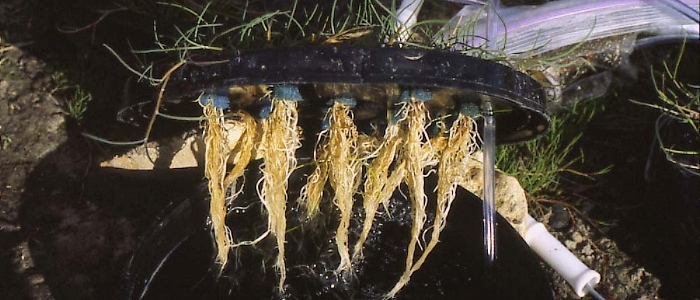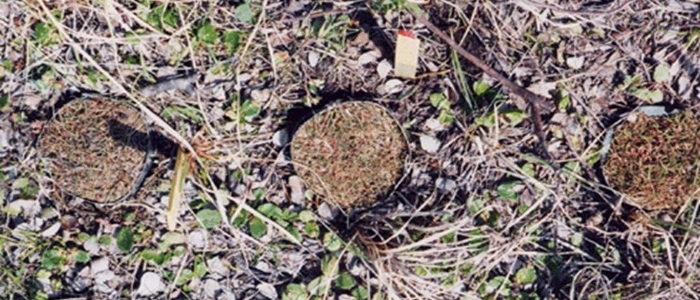
Professor
Department of Biology
Western University
1151 Richmond St. N
London, Ontario, Canada
N6A 5B7
Office: Biological & Geological Sciences 3021
Email: hhenry4@uwo.ca
Phone: 519 661-2111 x 81548
Fax: 519 661-3935

Photo: Jeffrey Dukes
Plot in the Jasper Ridge Global Change Experiment
Interactive effects of elevated CO2, N deposition and climate change on plant litter quality in a California annual grassland
Previously, I investigated the relationship between plant organic compounds and microbial functional diversity in the context of a multi-factorial global change experiment conducted in a California annual grassland. This experiment, which was the first to explore interactions between elevated CO2, nitrogen, precipitation and warming in a natural system, produced the unexpected result that elevated CO2 dampened plant biomass responses to the other global change treatments. My research revealed that the global change treatments had interactive effects on plant litter quality; the dampening effect of elevated CO2 may have occurred as an indirect consequence of changes in microbial function brought about by these changes in plant litter quality. I also characterized differences in the functional diversity of microorganisms among treatments by assaying the activity of specific cellulose- and lignin-degrading enzymes.
Nitrogen acquisition by Arctic salt-marsh plants

Photo: Hugh Henry
Roots of Puccinellia phryganodes
I also studied the impact of organic N uptake by plants on the nutrient dynamics of an Arctic salt marsh. I used 13C and 15N to trace the movements of soluble organic and inorganic N in the field and used these data to parameterize a model of the dynamics of N movement at the ecosystem level. My work revealed that the utilization of organic N by salt marsh plants supports primary productivity at a time when high salinity limits inorganic N availability.

Photo: Hugh Henry
In situ soil cores